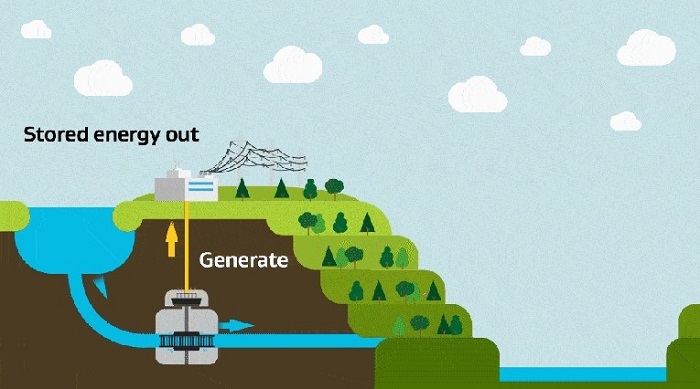Conversation begins with locals on Lake Onslow proposal
Jill Herron
11 July 2022, 5:45 PM
 If a pumped hydro scheme goes ahead here, a 60m high dam could bring the water level to the height of this trig station, creating a 74sqkm lake
If a pumped hydro scheme goes ahead here, a 60m high dam could bring the water level to the height of this trig station, creating a 74sqkm lakeThe time has come for the Teviot Valley community to start sharing its views on the massive Lake Onslow proposal.
This week Cabinet confirmed a pumped hydro scheme at Lake Onslow appears “technically feasible” at this stage, although more work is needed.
Many have taken a wait-and-see approach to the proposal so far and, while more will be known in six months, the Central App understands that government representatives will be talking directly with local organisations in coming weeks about the project’s considerable impacts.
If it goes ahead, the hydro scheme will be the largest in New Zealand’s history.
There are predictions of a four-year build with 3,000 direct jobs and an economic boost to the area.
Where the workers would be sourced and where they could live is unclear as Central Otago is suffering major worker and housing shortages.
Whether the locals have an appetite for another think-big scale project after the construction of the Roxburgh hydro dam (1956) and Clyde dam (1993) is another unknown.
The government’s feasibility study is being paid for from a $30M fund assigned to this project and other NZ Battery Project electricity generation options being explored.
In 2020 the government announced an extra $70M was being set aside to expedite stage two of the studies, with an eye on the goal of making the country’s electricity generation 100 per cent renewable by 2030, five years earlier than planned.

Water from the Clutha River would be pumped up to Lake Onslow during surplus supply times then released down through the underground powerhouse during periods of low-supply such as droughts
Cabinet confirmed last week that, from the range of alternative technologies, the NZ Battery Project will narrow its focus from five to three non-hydro options for the remainder of phase one. The options are flexible geothermal, hydrogen and biofuels.
Energy and Resources minister Megan Woods recently updated her Cabinet colleagues on progress.
Although the feasibility studies into possible dry year solutions are ongoing through the rest of this year, her update confirmed the project was “on the right track” and helped refine the scope for the remainder of phase one.
This further work, including the geotechnical investigations underway in the Teviot Valley, will be done over the next few months to analyse potential construction, engineering, cost, timing and consenting, as well as integration with the transmission system, according to a project newsletter.
“Early analysis also shows Lake Onslow could mitigate the dry year problem and would support a pathway to a 100 per cent renewable electricity system. It could also help smooth wholesale prices and reduce need to overbuild renewable generation to replace fossil fuel generation,” the newsletter stated.
“But more work is required to incorporate environmental, cultural, social and geotechnical findings, and refine potential design options. This will give a good indication of development timelines and costs for a feasibility level decision.”
The Lake Onslow feasibility study underway not only assesses the technical feasibility of such a scheme, but will also weigh up the environmental, cultural, social and commercial considerations.

Traditional-style plumbing at Lake Onslow huts, Central Otago
“The area around Lake Onslow is culturally significant and so it is important that we continue to work with mana whenua while exploring the possibility of this scheme.
“It’s also important we understand the possible impacts on the local community and we will be continuing to engage with community members in the coming months. In particular, we appreciate the investigations place uncertainty and stress on a small group of landowners who would be significantly impacted if the scheme was to go ahead. We will continue to work directly with these landowners.”
The project team is also analysing the impacts a pumped hydro scheme at Lake Onslow would have on the electricity system, prices and commercial incentives and how the scheme would connect to the grid.
No guarantees of lower electricity prices have been given.





